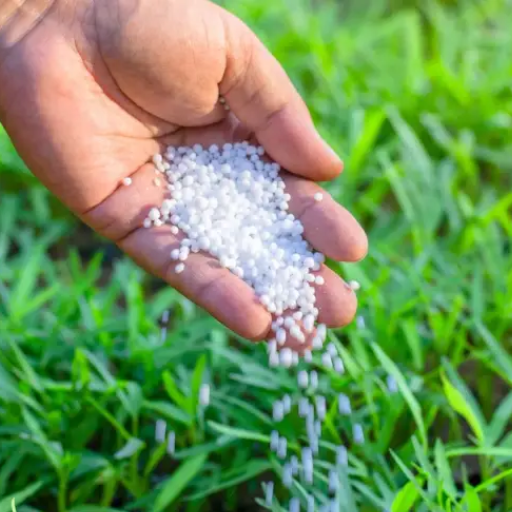Understanding Granular Fertilizer
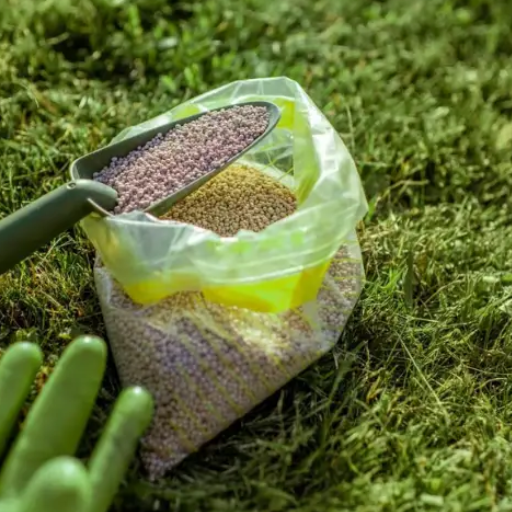
Definition and Composition
Granular fertilizer is a term used for fertilizers made in solid, pellet-type granules. Usually, the granules are made through a manufacturing process that concentrates the nutrients into particles easy to handle and with slow nutrient release.
The primary components of granular fertilizers are:
- Nitrogen (N) – Promotes leafy growth and green color
- Phosphorus (P) – Supports root development and flowering
- Potassium (K) – Enhances disease resistance and overall plant health
- Micronutrients – Iron, zinc, and manganese for specific deficiencies
While these fertilizers vary in composition according to the usage objective, some blends are available for general use with apparently balanced amounts of NPK; the other blends focus more on the targeted supply. Slow-release granular fertilizers are coated with sulfur, polymer, or other substances to control the release of nutrients over time to suit the nutritional requirements of plants and reduce the application frequency.
Common Uses in Lawn and Garden
Granular fertilizers have earned a reputation for being great for application in lawns and gardens, considering their ease of use and ability to provide instant nutrients to plants:
- Lawn Care: Promote healthy grass growth for high turf density and better brightness
- Garden Plants: Support flower, vegetable, and shrub growth
- Soil Amendment: Treat specific nutrient deficiencies in the soil
- Long-term Projects: Suitable for regions where infrequent fertilizer applications are preferred
Granular Fertilizer Benefits
Controlled Nutrient Release
Release nutrients over a longer period, providing plants with essential elements through a protracted period. Can increase nitrogen use efficiency up to 30%.
Easy Storage and Application
Solid dry formulations prefer storage to be dry rather than liquid fertilizer. It can be applied with various methods for precise distribution.
Customizable Formulations
Allow customized nutrient ratios based on plant or soil needs, from high phosphorus for root development to balanced fertilizers.
Cost-Effectiveness
Concentrated formulations that can be stored for extended periods, often considered cost-effective by growers.
Versatile Application
Suitable for various agricultural and horticultural establishments, from large-scale farming to small gardens.
Major Disadvantages of Granular Fertilizer
Environmental Impact
Primary Environmental Issues Include:
- Nutrient Runoff: Excess fertilizer gets washed away by rainwater or irrigation into neighboring water bodies
- Eutrophication: Causes algae blooms that threaten aquatic ecosystems by depleting oxygen
- Greenhouse Gas Emissions: Manufacturing and application contribute to global warming
- Nitrous Oxide Release: A potent greenhouse gas released when nitrogen fertilizers break down in soils
Studies have found that phosphorus and nitrogen contained in typical granular fertilizers are mainly responsible for water quality management problems globally. The Haber-Bosch process used in nitrogen fertilizer manufacturing is particularly energy-intensive, releasing large quantities of carbon dioxide.
Application Challenges
The use of granular fertilizers faces an array of technical and environmental issues:
- Uneven Distribution: Poor spreading causes nutrient concentration in some spots while depriving others, resulting in poor crop yields and environmental leaching
- Timing and Rate Issues: Over-application leads to leaching and harmful algal blooms; under-application causes suboptimal growth
- Weather Dependency: Unpredictable rainfall and temperature fluctuations affect nutrient solubility and mobility
- Soil Variable Response: Different soil types, moisture, and topographic conditions yield varying nutrient absorption rates
Cost Implications for Farmers
The cost of fertilizers proves to be one of the greatest challenges for farmers, particularly in regions where markets are unstable:
- Price Fluctuations: Due to raw materials availability, manufacturing costs, and transportation costs
- Operating Expense Impact: Can constitute a large chunk of operating expenses for small-scale farmers
- Global Market Sensitivity: Supply chain disruptions and geopolitical tensions sharply affect prices
- Technology Investment: Advanced application systems require high initial investment costs
Liquid vs Granular Fertilizer Comparison
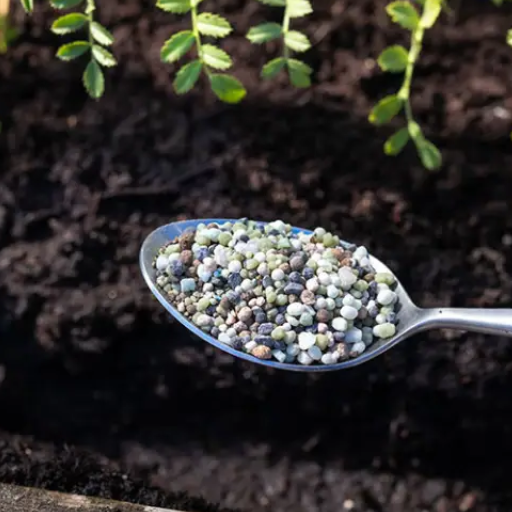
Comprehensive Nutrient Delivery Analysis
| Aspect | Granular | Liquid |
|---|---|---|
| Speed | Gradual | Instant |
| Consistency | Variable | Consistent |
| Frequency | Rare | Regular |
| Storage Ease | Simple | Complex |
| Expense | Affordable | Expensive |
| Availability | Limited | Immediate |
| Salt Levels | Elevated | Minimal |
| Usability | Moderate | Convenient |
| Stability | Reliable | Volatile |
| Purpose | Sustained | Quick Fix |
Pros and Cons of Liquid Fertilizer
✓ Advantages
- Fast Uptake: Readily absorbed through roots or shoots
- Precision Application: Exact dosages and targeted application
- Irrigation Compatible: Works with drip and sprinkler systems
- Customizable: Can contain macro/micronutrients and enhancers
✗ Disadvantages
- Higher Cost: More expensive per unit of nutrients
- Storage Issues: Requires sealed containers, degradation risk
- Equipment Dependent: Needs specialized machinery
- Leaching Risk: May wash away in sandy soils or heavy rain
Alternatives to Granular Fertilizer
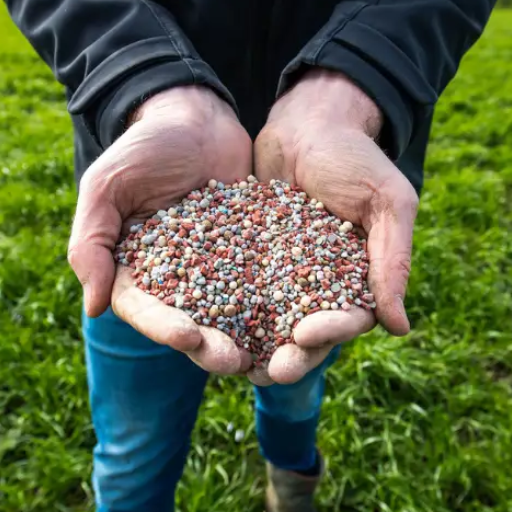
Benefits of Using Liquid Fertilizer
- Rapid Nutrient Absorption: Can reduce nutrient delivery time by nearly 30% compared to granular forms
- Uniform Distribution: Liquid application ensures even coverage throughout the intended area
- Custom Formulations: Easy to modify nutrient concentrations based on soil tests
- Foliar Feeding Capability: Direct application to plant leaves with 15-20% yield increases reported
- Irrigation System Compatibility: Works with drip and sprinkler systems, reducing labor
Organic Fertilizer Options
Organic fertilizers are alternatives to synthetic ones, derived from natural sources such as plant residues, animal manure, or composted materials. They provide essential nutrients while improving soil structure and increasing microbial activity.
Popular Organic Fertilizer Types:
- Compost: Well-decomposed organic materials provide carbon and nitrogen
- Manure: From livestock wastes, must be well-processed and aged
- Bone Meal: Strong source of phosphorus
- Blood Meal: High nitrogen content for plant growth
Combining Liquid and Granular Fertilizers
The integration of liquid and granular fertilizers creates synergistic nutrient management strategies:
- Complementary Timing: Liquid for immediate needs, granular for long-term nutrition
- Optimized Efficiency: Better nutrient-use efficiency through strategic application
- Yield Improvement: Integrated approaches can maximize crop yields by 15-20%
- Reduced Losses: Lower nutrient losses through leaching or volatilization
Best Practices for Fertilization
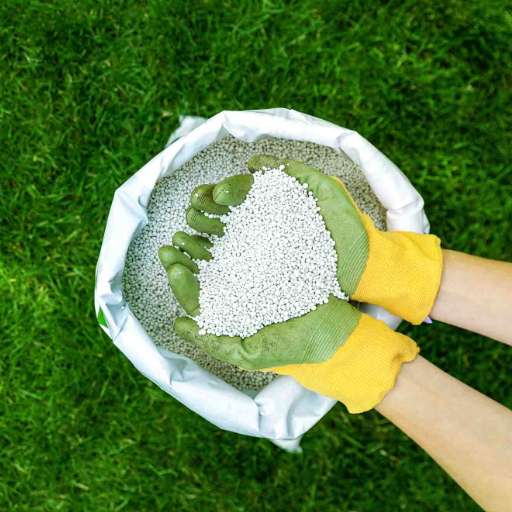
How to Apply Granular Fertilizer Effectively
- Conduct Soil Testing: Establish specific nutrient requirements before application
- Choose Proper Timing: Apply during active growth periods for optimal utilization
- Calibrate Equipment: Use rotary or drop spreaders for uniform distribution
- Weather Considerations: Avoid application before heavy rainfall
- Post-Application Care: Incorporate into the topsoil through light irrigation
Guidelines for Applying Liquid Fertilizer
- Formulation Selection: Choose a concentration based on crop needs and soil conditions
- Growth Stage Timing: Apply during early vegetative and reproductive stages
- Application Methods: Use drip irrigation or foliar spray for precision
- Weather Awareness: Avoid application before heavy rains
- Technology Integration: Utilize variable-rate application systems
Choosing the Right Fertilizer for Your Needs
Key Factors to Consider:
- Soil Testing Results: Determine nutrient status and deficiencies
- Crop Requirements: Different plants need different nutrient profiles
- Growth Stage: Nutrient needs vary throughout plant development
- Application System: Consider available irrigation and spreading equipment
- Environmental Goals: Factor in sustainability and runoff concerns
- Budget Constraints: Balance cost with effectiveness
Frequently Asked Questions (FAQ)
Key Takeaways
- Granular fertilizers offer long-term nutrition but have slower release rates
- Environmental concerns include runoff, eutrophication, and greenhouse gas emissions
- Application challenges include uneven distribution and weather dependency
- Cost fluctuations and equipment needs can impact farmers financially
- Liquid fertilizers offer faster nutrient delivery but require more frequent application
- Combining different fertilizer types can optimize plant nutrition
- Proper soil testing and timing are crucial for effective fertilization
- Sustainable practices help minimize environmental impact while maintaining productivity
References
- Pros and cons of granular and liquid fertilizers – Michigan State University Extension
- Know When to Use Granular Vs. Liquid Fertilizers – Ohio State University Extension
- Ask Extension: Do fertilizers help or hurt plants? – University of Minnesota Extension



